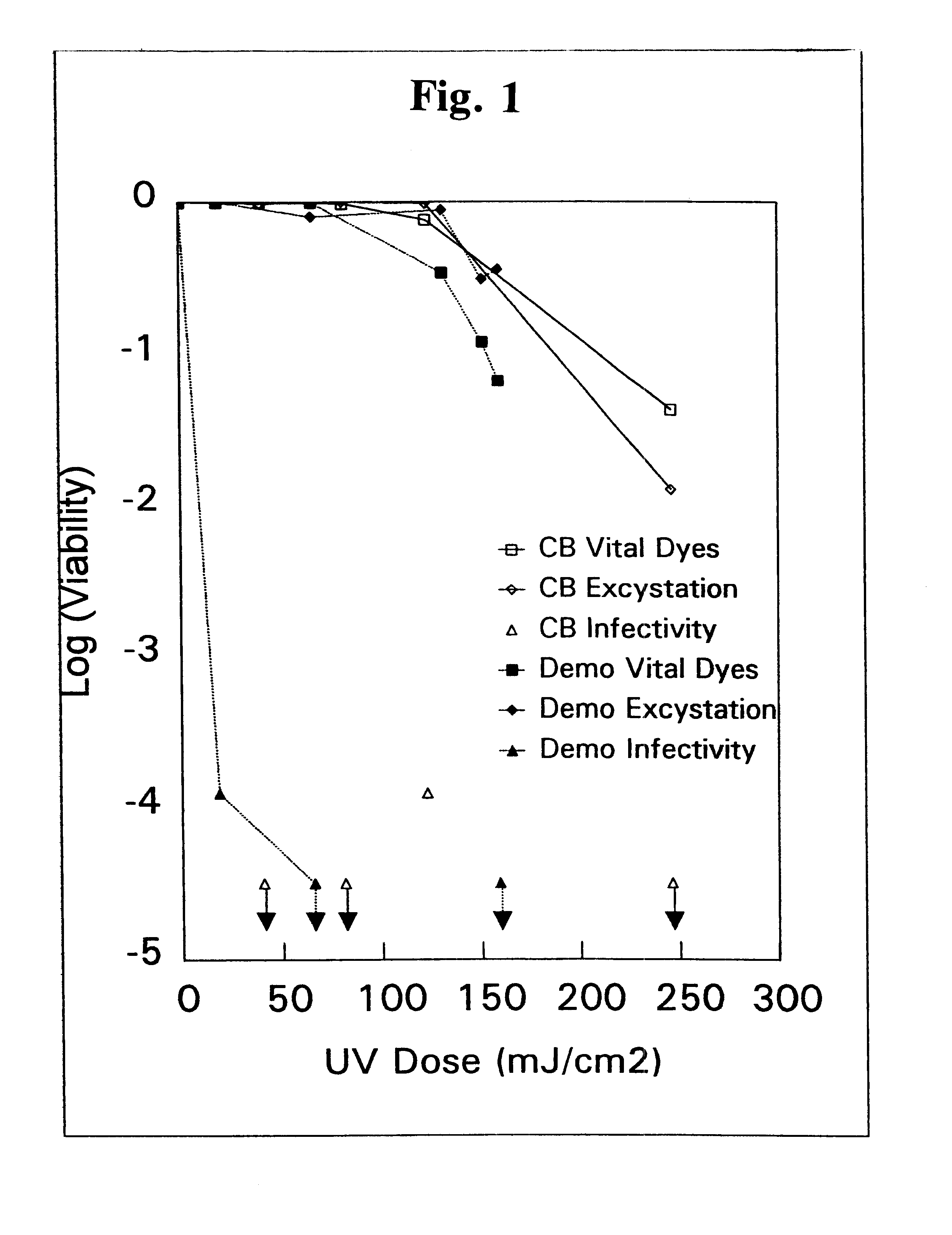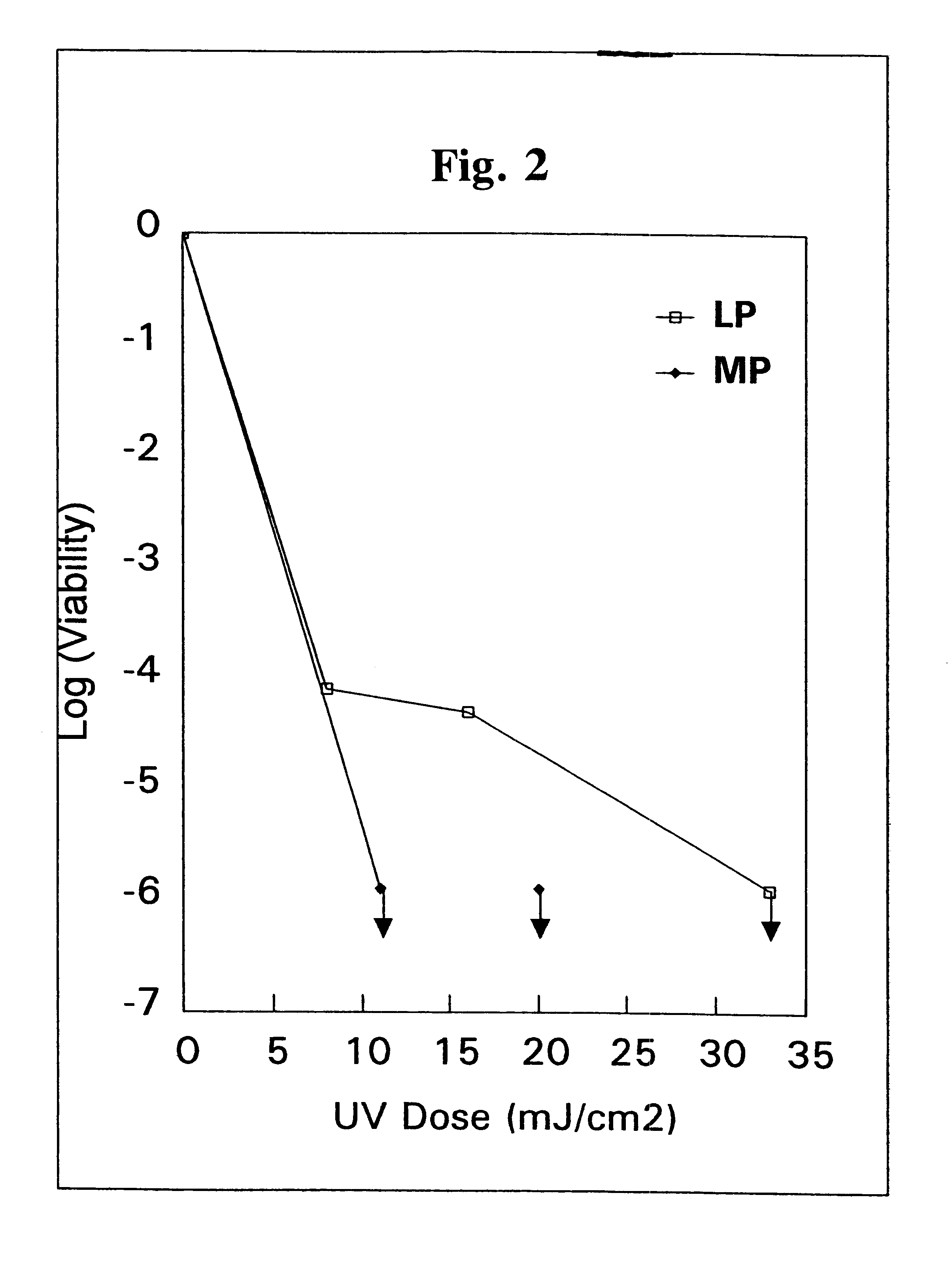Method for the inactivation of cryptosporidium parvum using ultraviolet light
a cryptosporidium parvum and ultraviolet light technology, applied in the direction of disinfection, specific water treatment objectives, chemistry apparatus and processes, etc., can solve the problems cell death, and almost certainly cell death effects, and achieve the effect of assessing the effect of oocyst viability and infectivity
- Summary
- Abstract
- Description
- Claims
- Application Information
AI Technical Summary
Problems solved by technology
Method used
Image
Examples
Embodiment Construction
Experiments were conducted on two different sets of apparatus: a bench-scale collimated beam setup and a demonstration-scale UV reactor.
A well-known bench-scale collimated beam apparatus was used in the test. An upper lamp housing can contain either a 15 W low-pressure Hg lamp (monochromatic at 254 nm) or a 1 kW Rayox medium-pressure Hg lamp (emitting over a broad range from 200-300 nm). Each lamp has its own power supply in the lower housing. A black plastic collimator (48 cm long and 6.4 cm diameter) extends vertically down from the lamp housing with a pneumatically-driven shutter in between. The cell suspension (in finished water from the Mannheim Water Treatment Plant, Kitchener, Ontario, Canada) to be irradiated is placed in a Petri dish (with a stir bar) on top of a stirring motor below the collimator and exposed for a fixed length of time to achieve the desired UV dose. The UV irradiance is measured with an Interational Light Model 1400 Radiometer with a Model SED240 detector...
PUM
| Property | Measurement | Unit |
|---|---|---|
| wavelength | aaaaa | aaaaa |
| wavelength | aaaaa | aaaaa |
| wavelength | aaaaa | aaaaa |
Abstract
Description
Claims
Application Information
 Login to View More
Login to View More - R&D
- Intellectual Property
- Life Sciences
- Materials
- Tech Scout
- Unparalleled Data Quality
- Higher Quality Content
- 60% Fewer Hallucinations
Browse by: Latest US Patents, China's latest patents, Technical Efficacy Thesaurus, Application Domain, Technology Topic, Popular Technical Reports.
© 2025 PatSnap. All rights reserved.Legal|Privacy policy|Modern Slavery Act Transparency Statement|Sitemap|About US| Contact US: help@patsnap.com


